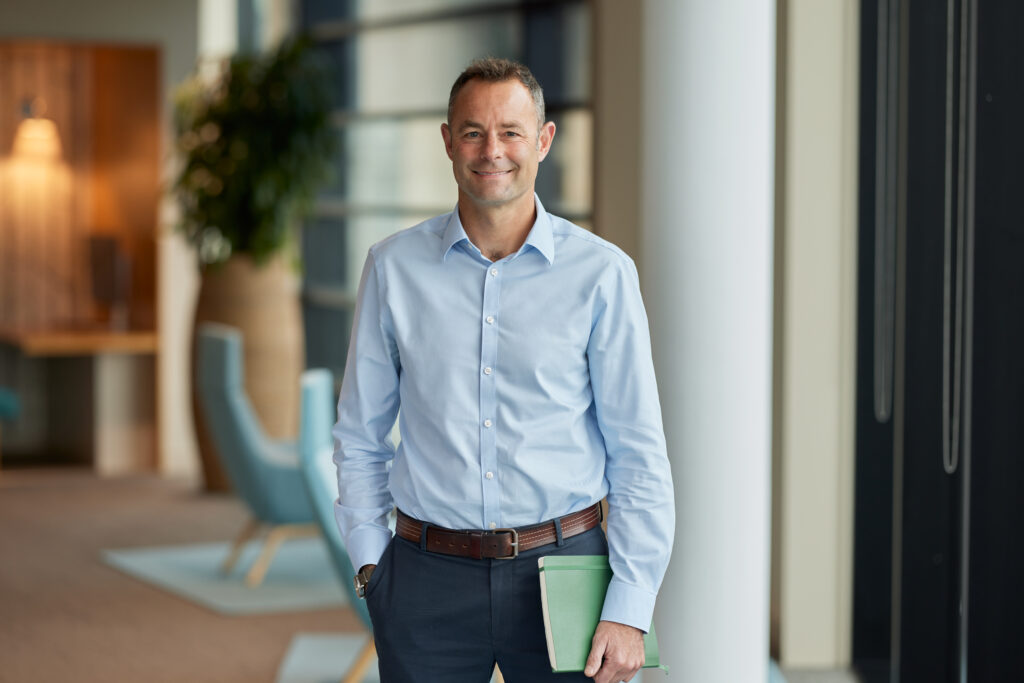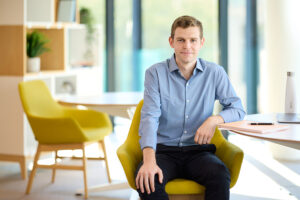Waarom groei en waarom nu?

Beleggen brengt risico’s met zich mee en het is mogelijk dat u een deel van of uw gehele investering verliest.
De afgelopen jaren waren moeilijk voor beleggers met een groei-stijl. Een vervelende combinatie van stijgende rentevoeten en extreme risicoaversie na de wereldwijde pandemie zorgde voor enorme marktschommelingen. Dit leidde weer tot een daling van de aandelenkoersen van bedrijven met langetermijnpotentieel.
Het is begrijpelijk dat men zich afvraagt of groeibeleggen nog steeds aantrekkelijke rendementen kan opleveren, maar de geschiedenis laat zien dat dit het verkeerde moment is om de handdoek in de ring te gooien.
Eerdere schokken op de aandelenmarkt en scherpe dalingen in groeiaandelen werden gevolgd door enorme rendementen in de daaropvolgende tien jaar. We zagen dit gebeuren na de inflatiecrisis van midden jaren zeventig en de financiële crisis van 2008, met daaropvolgend tien jaar cumulatieve rendementen van respectievelijk zo’n 1000 en 500 procent.
Er is geen reden om aan te nemen dat het deze keer anders zal zijn. Maar nu is er wel sprake van een extra dynamiek, aangezien we snelle technologische en maatschappelijke veranderingen zien.
In de afgelopen decennia was het ondernemingsklimaat relatief gunstig. Er was goedkope financiering voor ondernemingen en natuurlijke hulpbronnen werden gewonnen voor bedrijfsgroei – en dat alles in een omgeving van vrije wereldwijde handel.
Maar dit is snel aan het veranderen. We gaan een nieuw tijdperk van beperkingen en restricties in.
Geld is niet meer gratis, de rente gaat niet terug naar nul. Natuurlijke hulpbronnen raken uitgeput en bedrijven kunnen de natuur niet langer behandelen als een melkkoe. En er is weinig internationaal vertrouwen door handelsbeleid dat import beperkt, binnenlandse industrieën beschermt en prioriteit geeft aan nationale belangen.
Maar te midden van deze groeiende beperkingen is er ook een positieve verschuiving. Computerintelligentie wordt steeds geavanceerder, verspreidt zich snel en wordt steeds goedkoper. In het komende decennium gaat machine learning waarschijnlijk elke industrie op zijn kop zetten.
Sommige bedrijven zitten in een betere positie dan andere om met deze verschuiving te kunnen omgaan. Zoals bij elke grote overgang zijn er winnaars en verliezers. En hier ligt een kans voor stockpickers om de toekomstige winnaars te identificeren.
Dus wat zijn de kenmerken van de bedrijven die zullen gedijen in deze nieuwe omgeving?
1. Aanpak van echte praktische problemen
Sommige bedrijven zetten uitdagingen om in kansen en bieden innovatieve oplossingen op gebieden als e-commerce, gezondheidszorg en bankieren.
Samsara integreert telematicasystemen in vrachtwagens en magazijnen om de productiviteit te verhogen en vervuiling in de logistieke sector terug te dringen. Mercado Libre gebruikt technologie om de kosten van bankieren, betalen en sparen te verlagen in Latijns-Amerika, waar 70% van de mensen geen bankrekening heeft. Dexcom helpt mensen met diabetes met betere zelfzorg, waardoor de druk op ziekenhuizen wordt verlaagd.
2. Discipline en financiële kracht
Bij hogere rentetarieven worden de voordelen van een sterke balans al snel duidelijk. De aandelenmarkt associeert groeibedrijven met dubieuze financiën, maar dit stereotype is misplaatst. We zien veel groeibedrijven met gedisciplineerde leidinggevenden die hun financiële kracht en concurrentievoordeel gebruiken om prijsverhogingen door te voeren, hun omzet te laten groeien en te investeren voor de lange termijn.
Adyen, een platform dat lokale en internationale betaalmethoden vereenvoudigt, hield zich aan de voorgenomen prijsstelling, zelfs toen concurrenten de tarieven in de VS verlaagden. Het management had vertrouwen in het bedrijfsmodel en hield het aantal medewerkers op een verstandig niveau.
Spotify, de koploper in muziekstreaming, heeft vorig jaar prijsverhogingen doorgevoerd. Netflix heeft de afgelopen jaren de maandelijkse abonnementstarieven verschillende keren verhoogd en genereert nieuwe inkomsten uit advertenties.
3. Aanpassingsvermogen
De geschiedenis kent tal van bedrijven die kopje onder zijn gegaan omdat ze er niet in slaagden zich aan te passen. Denk aan Kodak, Nokia en Blockbuster Video. En de aandelenmarkten zitten vol beleggers die nog de laatste winsten uit wegkwijnende bedrijfsmodellen proberen te persen.
Om grote veranderingen te kunnen doorstaan, moeten bedrijven flexibel zijn en kunnen meegroeien. Neem bijvoorbeeld tractorbedrijf John Deere, dat in 1837 werd opgericht en inmiddels ook technologie integreert in de landbouw. Het bedrijf past computers, camera’s en machine learning toe om gewassen zeer nauwkeurig te besproeien, waardoor er veel minder gewasbeschermingsmiddelen nodig zijn. Dat is geweldig voor het milieu en voor de portemonnee van de boer.
Een ander voorbeeld is Shopify, dat alle tools biedt om een webshop op te zetten en allerlei machine learning-functionaliteiten introduceert die de online retail transformeren. Ondernemers die Shopify gebruiken beschikken nu over AI-tools om terugkerende taken te automatiseren, productbeschrijvingen te maken en verkopen te analyseren, waardoor ze tijd en geld besparen.
Er is helaas geen blauwdruk voor optimale aanpassing, maar bedrijven die hierin blijven experimenteren zullen de concurrentie uiteindelijk achter zich laten.
Geduld wordt beloond
Bescheidenheid en reflectievermogen zijn essentiële aspecten van beleggen en van elke periode met extreme rendementen kan iets worden geleerd. Maar het is net zo belangrijk voor beleggers om vast te houden aan een eigen stijl en aanpak. Voor groeibeleggers betekent dit dat ze bedrijven moeten vinden die zich staande kunnen houden in een nieuwe tijd van snelle veranderingen en verregaande verschuivingen.
Ondanks de verleiding om naar de korte termijn te kijken, suggereert de geschiedenis dat geduldige, strategische beleggingen komend decennium bijzonder lucratief zullen zijn. Door het verblindende succes van een klein aantal superbedrijven, de ‘magnificent seven’, is er een grote groep bedrijven die over het hoofd wordt gezien. Dit lijkt een unieke kans voor groeibeleggers.
Tim Garratt, Partner
Tim kwam in 2007 bij Baillie Gifford als beleggingsspecialist, waar hij zich richtte op de institutionele relaties die beleggen in de Long Term Global Growth strategie. Hij werd partner van het bedrijf in 2016. Voordat hij bij Baillie Gifford in dienst kwam, werkte Tim bij AT Kearney, waar hij een aantal private equity-projecten beheerde. Tim is in 1999 afgestudeerd als MEng in Aeronautical Engineering aan de Universiteit van Bristol.
Belangrijke informatie
Dit artikel vormt geen onafhankelijk onderzoek en valt niet onder de bescherming van onafhankelijk onderzoek. Baillie Gifford en haar medewerkers hebben mogelijk gehandeld in de betreffende beleggingen. De geuite meningen zijn geen feitelijke verklaringen en mogen niet worden beschouwd als advies of een aanbeveling om een bepaalde belegging te kopen, verkopen of aan te houden.
Baillie Gifford Investment Management (Europe) Ltd (BGE) is door de Centrale Bank van Ierland erkend als een AIFM onder de AIFM-verordeningen en als een icbe-beheermaatschappij in het kader van de icbe-verordening. BGE beschikt ook over wettelijke machtiging om individuele portefeuillebeheeractiviteiten uit te voeren. BGE biedt beleggingsbeheer- en adviesdiensten aan Europese (exclusief Britse) gesegregeerde klanten. BGE is aangesteld als icbe-beheermaatschappij voor de volgende icbe-paraplumaatschappij: Baillie Gifford Worldwide Funds plc. BGE is een volledige dochteronderneming van Baillie Gifford Overseas Limited, die volledig in handen is van Baillie Gifford & Co. Baillie Gifford Overseas Limited, en Baillie Gifford & Co zijn geautoriseerd en gereguleerd in het VK door de Financial Conduct Authority.


Impact via een betalingsbedrijf?
Mei 2024 | Lee Qian, investment manager van Baillie Gifford’s impact strategie ‘Positive Change’, vertelt hoe hij en het team tot de beslissing kwamen om te investeren in het internationaal opererende betalingsbedrijf Remitly en waarom dit de levens van de armste mensen ter wereld verbetert.


Opkomende export-kampioenen in Azië
April 2024 | Aziatische landen zoals Vietnam en Indonesië dagen China uit als ‘s werelds grootste exporteur. Baillie Gifford’s portfolio manager Ben Durrant bezocht de regio en licht een aantal kansen toe die hij op zijn reis ontdekte.